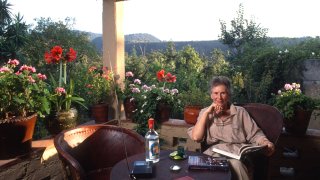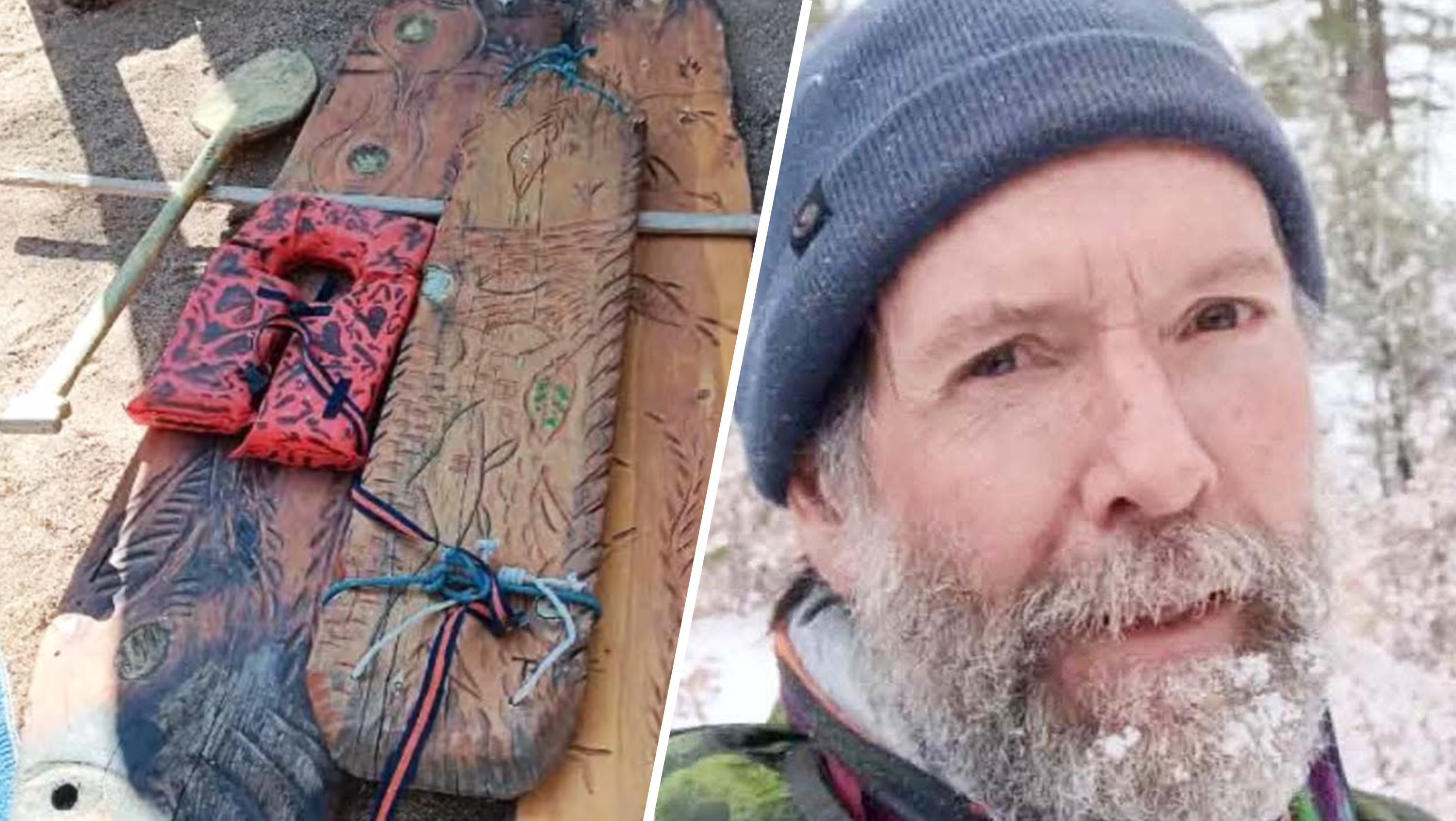
Diana Kennedy, a tart-tongued British food writer devoted to Mexican cuisine, died Sunday. She was 99.
Kennedy spent much of her life learning and preserving the traditional cooking and ingredients of her adopted home, a mission that even in her 80s had her driving hundreds of miles across her adopted country in a rattling truck as she searched remote villages for elusive recipes.
Her nearly dozen cookbooks, including “Oaxaca al Gusto,” which won the 2011 James Beard Award for cookbook of the year, reflect a lifetime of groundbreaking culinary contributions and her effort to collect vanishing culinary traditions, a mission that began long before the rest of the culinary world was giving Mexican cooking the respect she felt it was due.
Her long-time friend Concepción Guadalupe Garza Rodríguez said that Kennedy died peacefully shortly before dawn Sunday at her home in Zitacuaro, about 100 miles west of Mexico City.
Get San Diego local news, weather forecasts, sports and lifestyle stories to your inbox. Sign up for NBC San Diego newsletters.
“Mexico is very grateful for her,” Garza Rodríguez said. Kennedy had had lunch at a local hotel on March 3 for her birthday, but during the past five weeks had mostly stayed in her room. Garza Rodríguez visited Kennedy last week and said she cried when they parted.
Mexico's Culture Ministry said via Twitter Sunday that Kennedy's “life was dedicated to discovering, compiling and preserving the richness of Mexican cuisine.”
“Diana understood as few do, that the conservation of nature is key to continue obtaining the ingredients that make it possible to keep creating the delicious dishes that characterize our cuisine,” the ministry said.
U.S. & World
Her first cookbook, “The Cuisines of Mexico,” was written during long hours with home cooks across Mexico. It established Kennedy as the foremost authority on traditional Mexican cooking and remains the seminal work on the subject even four decades later. She described it as a gastronomy that humbled her and she credited those -- usually women -- who shared their recipes with her.
“Cooking teaches you that you’re not always in control,” she had said. “Cooking is life’s biggest comeuppance. Ingredients can fool you.”
She received the equivalent of knighthood in Mexico with the Congressional Order of the Aztec Eagle award for documenting and preserving regional Mexican cuisines. The United Kingdom also has honored her, awarding her a Member of the British Empire award for furthering cultural relations with Mexico.
Kennedy was born with an instinctive curiosity and love of food. She grew up in the United Kingdom eating what she called “good food, whole food,” if not a lot of food. During World War II, she was assigned to the Women Timber Corps, where food was simple and sometimes sparse — homemade bread, fresh cream, scones and berries on good days, nettle soup or buttered green beans when rations were lean.
Millions across Western Europe shared this simple sustenance, but for Kennedy these meals awakened an appreciation of flavor and texture that would last a lifetime.
She talked about her first mango — “I ate it in Jamaica’s Kingston harbor, standing in clear, blue warm sea, all that sweet, sweet juice” — the way some talk about their first crush.
Indeed, that first mango and her husband, Paul Kennedy, a New York Times correspondent, arrived in her life around the same time. He was on assignment in Haiti, she was traveling there. They fell in love and in 1957 she joined him in Mexico, where he was assigned.
Here a series of Mexican maids, as well as aunts, mothers and grandmothers of her new friends, gave Diana Kennedy her first Mexican cooking lessons — grinding corn for tamales, cooking rabbit in adobo. It was another culinary awakening. While her husband wrote about insurrections and revolutions, Kennedy traipsed a land that was, for her, “new, exciting and exotic,” sampling unique fruits, vegetables and herbs of various regions.
The couple moved to New York in 1966 when Paul Kennedy was dying of cancer.
Two years later, at the urging of New York Times food editor Craig Claiborne, she taught her first Mexican cooking class, hunting out ingredients in the Northeast to reproduce the bursting flavors of Mexico. Soon she was spending more of her time back in Mexico, establishing a retreat there that still serves as her home in the country.
In classes, cookbooks and lectures, her fundamental principal is simple: “There is never, ever, any excuse for bad food.”
She was known for her sharp-tongue commentary, even as her pioneering work helped turn Mexico into a culinary mecca for foodies and the world’s top chefs, and transformed a cuisine long dismissed as tortillas suffocated in heavy sauces, cheeses and sour cream.
She once told Jose Andres, James Beard Award winning chef and proprietor of an acclaimed Mexican restaurant, that his tamales were “bloody awful.”
She worried that famous chefs, who flocked to Mexico in recent years to study and experiment with the purity of the flora, fauna and flavors, were mixing the wrong ingredients.
“Many of them are using it as a novelty and do not know the things that go together,” she said. “If you are going to play around with ingredients, exotic ingredients, you’ve got to know how to treat them.”
Kennedy was fiercely private and guarded about who she let into her sustainable Mexican retreat near the city of Zitacuaro in the conflicted western state of Michoacan. No one was welcome unannounced. Cell phones were turned off and computers were kept in a writing studio. Her companions were her paid help, a staff who treated her like a dear friend, and several beloved — if somewhat fierce — dogs.
Growing in Kennedy’s vast and enchanting garden, remnants — and resurrections — of ancient culture climbed the stone walls. She worked hard to prevent the loss of local ingredients, creating a rolling farm of indigenous herbs and other produce. The growing continued in a vine-filled atrium in the center of her home, a steamy culinary paradise of vanilla, oregano, mint, bananas, and countless local herbs.
“Rebellious activist, an absolute defender of the environment, Diana Kennedy was and continues to be the best example of care for the environment and its biodiversity,” her editor Ana Luisa Anza wrote in a remembrance Sunday. She wrote that years ago Kennedy had set reaching the age of 100 as a goal to conclude her life’s work.
In 2019, the documentary “Diana Kennedy: Nothing Fancy,” showed a still feisty Kennedy relishing in the production of her garden and driving the bumpy roads of Zitacuaro.
In her later years, Kennedy had said she wanted to slow down, but couldn’t.
“There are so many more recipes out there, handed down mother to daughter that are going to be lost. There are seeds and herbs and roots that could disappear. There is absolutely so much more that needs to be done!” she said.
In Memoriam: People We've Lost in 2022
___
AP journalist Martha Mendoza contributed.



